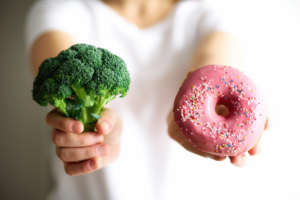 https://samahitaretreat.com/wp-content/uploads/2019/11/Beach-Fire-with-Daphne-Tse-and-Matthew-Cohen.jpg
491
1000
Daniel Stringer
http://samahitaretreat.com/wp-content/uploads/2024/01/samahita-logo-v2.svg
Daniel Stringer2019-11-26 00:00:002024-02-15 09:32:52Beach Fire with Daphne Tse and Matthew Cohen
https://samahitaretreat.com/wp-content/uploads/2019/11/Beach-Fire-with-Daphne-Tse-and-Matthew-Cohen.jpg
491
1000
Daniel Stringer
http://samahitaretreat.com/wp-content/uploads/2024/01/samahita-logo-v2.svg
Daniel Stringer2019-11-26 00:00:002024-02-15 09:32:52Beach Fire with Daphne Tse and Matthew CohenRise of the junk food generation
Ultra Processed food = Ultra processed people
Most of us know the saying, “you are, what you eat”, so if we are eating more junk food than whole food the outcome is not likely to equate to health and wellbeing. The food we consume not only needs to satisfy our taste buds and appetite, more importantly, it drives our biological processes, it needs to deliver essential nutrients to fuel our cells, so we can function at our best! The production of food as well as our eating habits have shifted considerably in the last 100 years as new formulas and ways of processing, packaging, transporting and marketing food have evolved. There is a considerable amount of new “ingredients, flavorings and additives” that have found their way into many of the products we consume daily and rely on, specifically for convenience, palatability as well as price. Ultra-processed foods (UPF’s) are the industrially produced edible substances that are on the radar of many health, diet and nutrition experts and is the subject of today’s blog, so let’s dive in!
What exactly is ultra-processed food?
Almost all foods are processed to some degree, even if only for preservation, so not all processed food is bad for us. According to the NOVA food classification system, food is classified into four groups according to the extent and purpose of industrial processing: 1) unprocessed or minimally processed foods, 2) processed culinary ingredients, 3) processed foods, and 4) ultra-processed foods. UPF’s are defined as “formulations of several ingredients which, besides being typically high in salt, sugar, oils, and fats, include food substances you would not find in a household kitchen, in particular, things like flavours, colours, sweeteners (like high-fructose corn syrup & aspartame), emulsifiers, thickeners, hydrogenated oils, bulking, foaming & gelling agents, and other industrial additives used to imitate sensorial qualities of unprocessed or minimally processed foods and their culinary preparations, or to disguise undesirable qualities of the final product.” UPF’s are typically high energy-dense products, high in unhealthy fats, sugar and salt, low in fiber, protein and vitamins/minerals and are wrapped and preserved in plastic packaging. Compounds like phthalates and bisphenols from the packaging are also finding their way into the foods we are consuming, and studies have shown these to cause endocrine disruption and affect the gut microbiome.
The success of the Ultra-Processed food group
In a typical Western diet in the US & UK, UPF’s average about 50% (or more!) of a person’s daily calorie intake! They are most often lower in price than the whole food option, often tastier (due to all the additives etc) and are very convenient, either being an easy grab-and-go, ready-to-consume choice, up to full ready-made meals. And due to the preservatives and packaging, UPF’s are easier to store and generally have a longer shelf life. This is the kind of food that dominates the supermarket shelves, petrol stations, take away chains, schools, prisons, old age homes and hospitals and are often all you can find in low-income areas known as “food deserts”. They yield high profits, and are driven by shareholders and manufacturers through aggressive, targeted marketing campaigns. Studies regarding food safety/no harm to health are often funded by large corporations/companies with vested interests. Proving that specific ingredients cause human harm can be challenging as there are a range of other factors in our lives that can cause these “lifestyle diseases”, for example: lack of exercise, smoking, daily alcohol consumption or high fat/sugary diets.
So, what’s all the fuss about?
It is important to note that not all processed food should be vilified, most foods need to be processed to some extent to enhance the quality, digestibility, bioavailability, and preservation. The latest research however shows that it is the increase in consumption of ultra-processed foods that is linked to the increase of adverse health outcomes such as obesity, diabetes, cardiovascular disease, hypertension and cancer. Whilst we cannot go back in time and undo what has already been done, we can shift our attention and make changes going forward. With new information and a deeper understanding of our interconnectedness with the Earth, nature and our food, we have a much greater ability to choose healthier, more sustainable options. Not all people will have the luxury of being able to choose a completely UPF free diet, but over time, with greater transparency, improved communication, changes in policy and improvements in food labelling and processing, more people will be able to make informed decisions.
Ditching the junk food and bad habits…
Each of us will have a different perspective, relationship and understanding of food and nutrition so it’s important not to compare yourself to others on your health journey. While we do know that UPF’s are addictive, we must take responsibility for ourselves and put in the effort required to make changes and improvements, no-one can do it for us. (Seek professional help where needed.) Our starting points will be different, so the things we need to do and interventions we must take along the way will be different, but the desired outcomes will be similar; to improve our health and wellbeing. When we know better, we can do better! Instead of grabbing a bag of Doritos to snack on, try a handful of nuts or a boiled egg, ditch the can of soda and opt for sparkling water with lemon. Choose the healthier option; swap the Fruit Loops and Frosties for Weetabix or Special K, small differences add up! Making changes to our diet are key, however, we need to exercise, stay hydrated, reduce alcohol consumption and be mindful of the things we consume in the media as well in order to improve our chances of living a full, happy and healthy life of vitality and wellbeing!
Keep up with the latest information, look at ALL the research available, use your common sense and find a balanced approach to your health. It’s OK to have a candy bar and a Coke once a week if you’re eating whole, healthy foods most of the time. And last but not least, if you have fur babies, consider their diet as well, cats and dogs are carnivores and the dried/canned foods we are feeding them are very high in grains and are also ultra-processed. https://truthaboutpetfood.com/is-your-pets-food-processed-or-ultra-processed/
As a leading wellbeing retreat center for 20 years, Samahita has always provided our guests with clean, wholesome food, locally sourced, seasonal and organic where possible. It takes a little more time and effort to make our own jams, peanut butter, juices and dressings but ultimately, it’s these little things that really make a difference- and our guests can feel the difference when they eat our food. Get creative, get your kids involved and have fun with food. Do what you can with what you have, and BE WELL!
References:
https://www.bbc.co.uk/food/articles/van_tulleken
https://www.youtube.com/watch?v=FRRGyy5nNlk Ultra-Processed People: The Science Behind Food That Isn’t Food
https://www.thelancet.com/action/showPdf?pii=S2589-5370%2823%2900017-2
https://www.nutraingredients.com/Article/2023/09/27/Challenging-the-vilification-of-ultra-processed-foods
https://www.foodnavigator.com/Article/2023/12/05/ultra-processed-foods-expert-stresses-importance-of-consumer-communication
https://www.theguardian.com/food/2023/sep/06/ultra-processed-foods-the-19-things-everyone-needs-to-know
https://www.cambridge.org/core/services/aop-cambridge-core/content/view/E6D744D714B1FF09D5BCA3E74D53A185/S1368980018003762a.pdf/ultra-processed-foods-what-they-are-and-how-to-identify-them.pdf
https://pethelpful.com/ask-a-vet/dry-food-bad-for-dogs
More from the Samahita Blog



